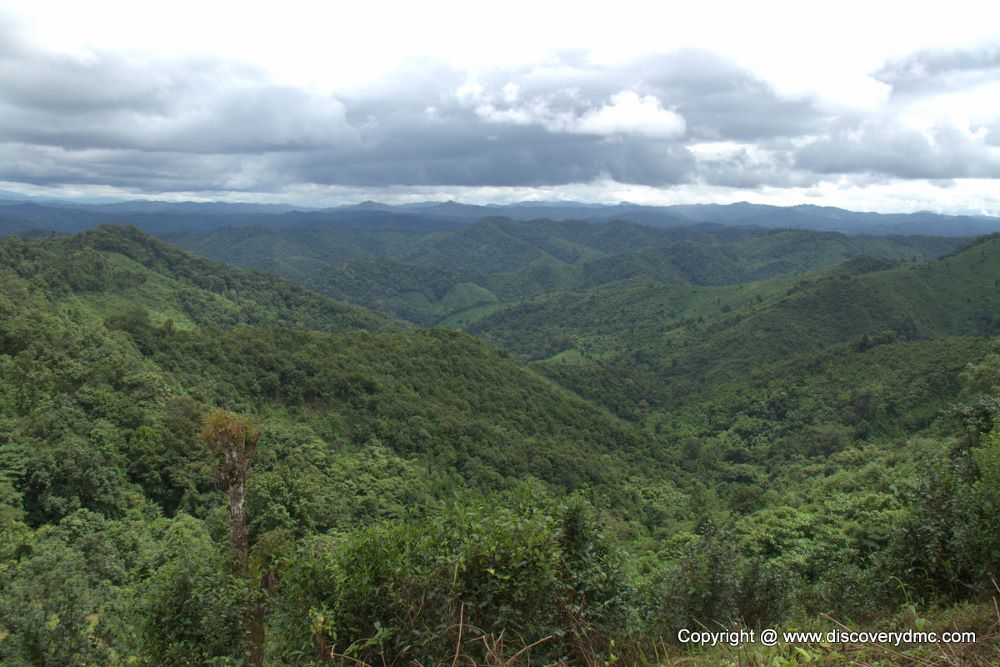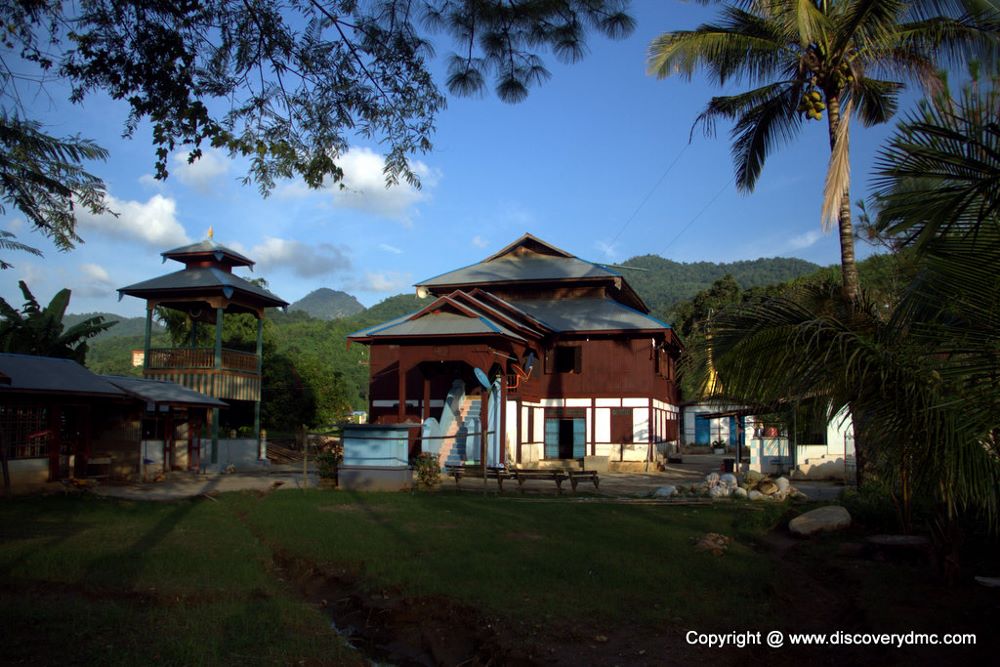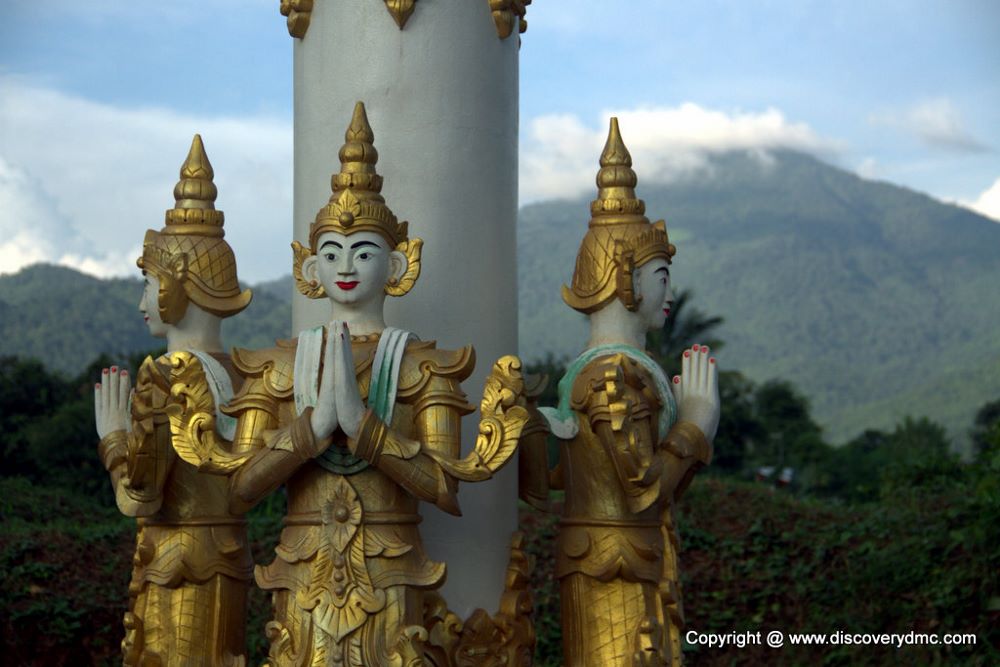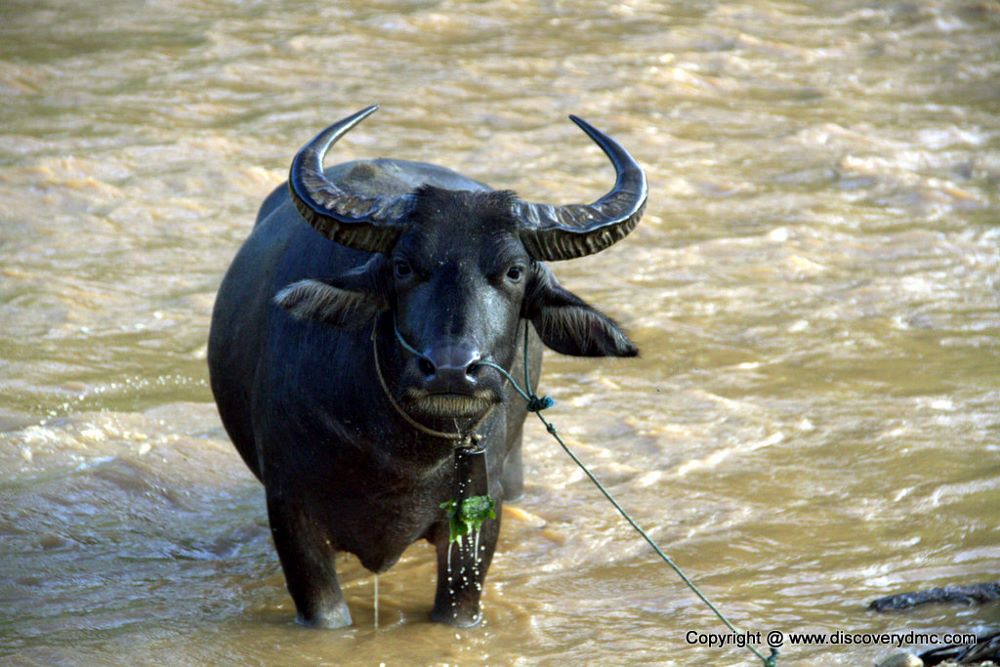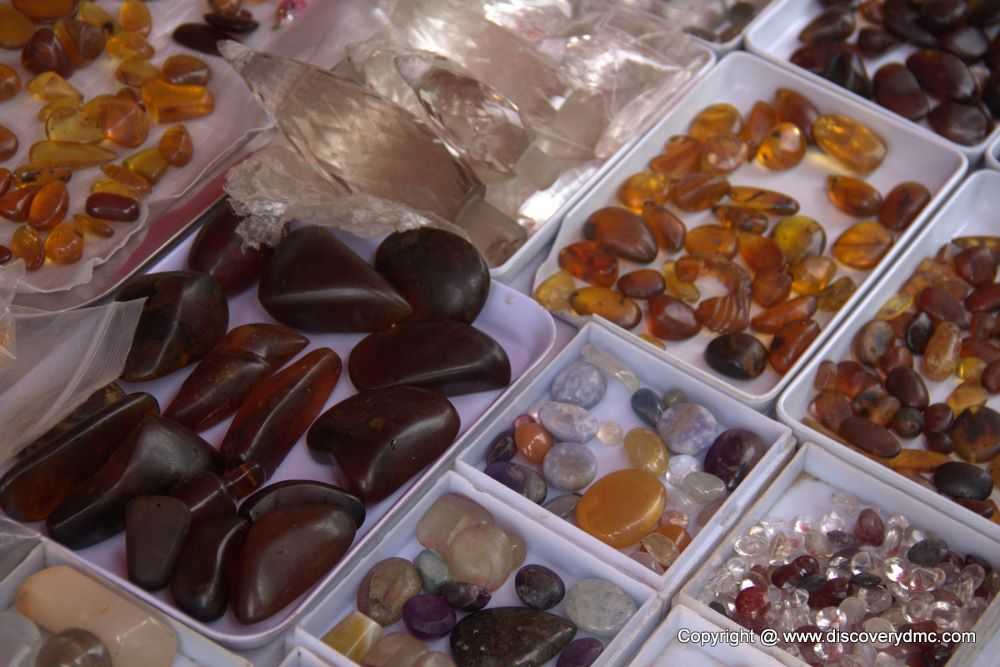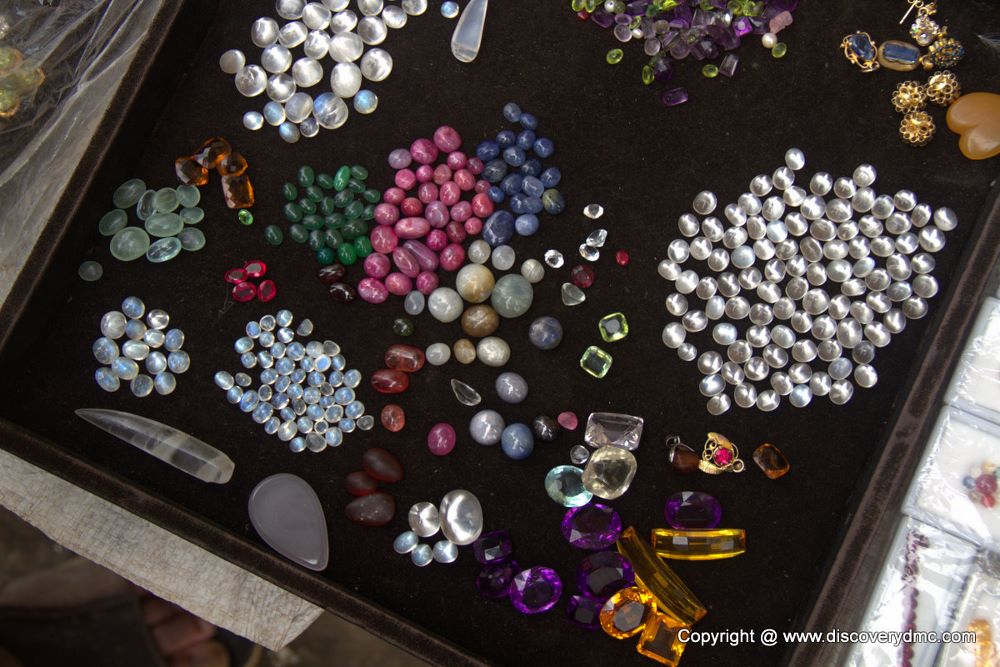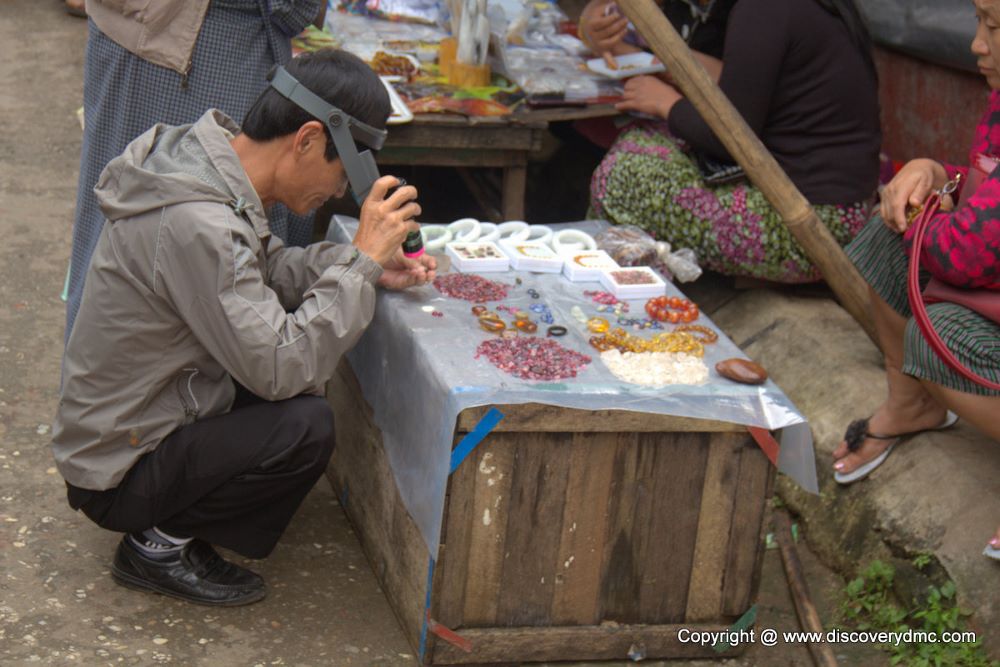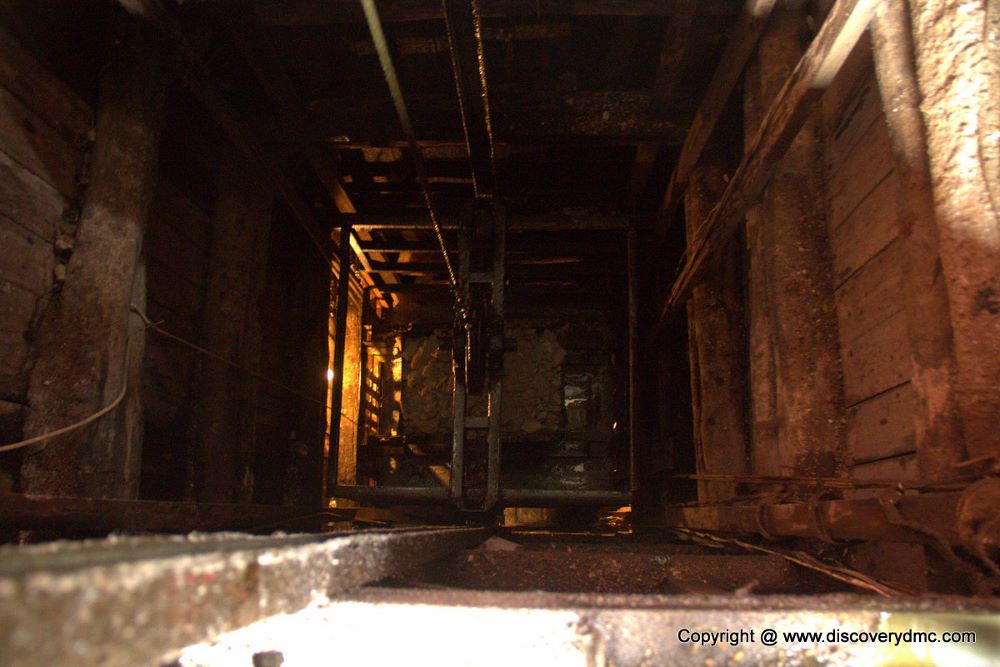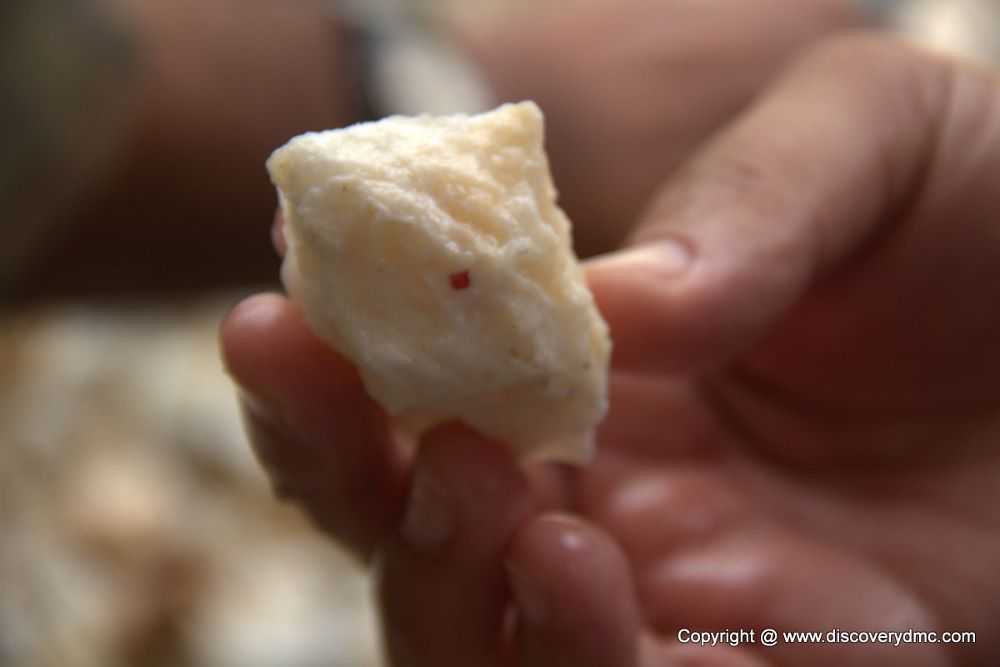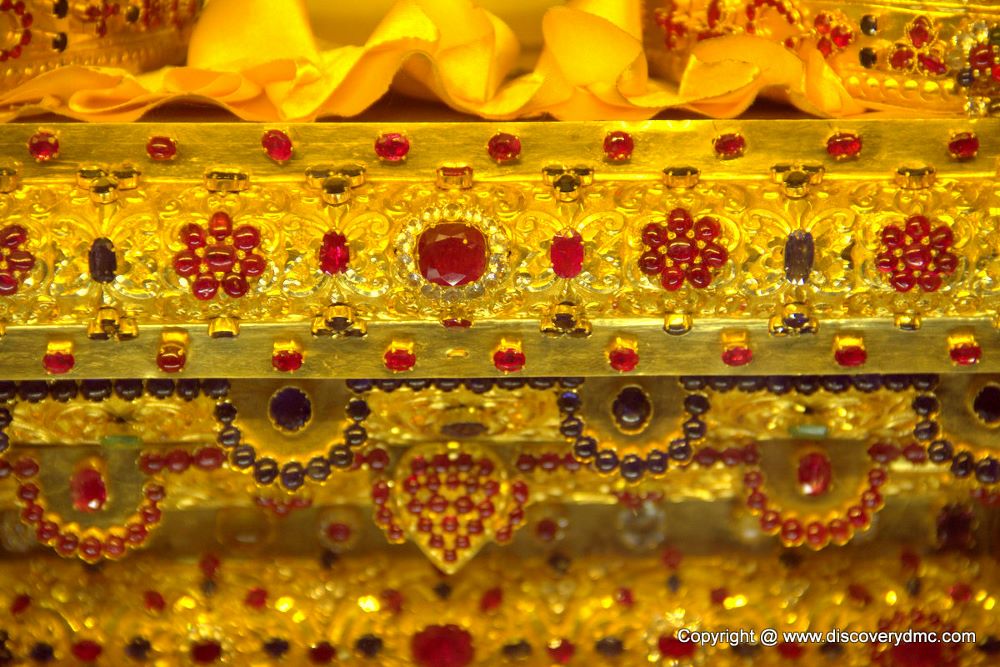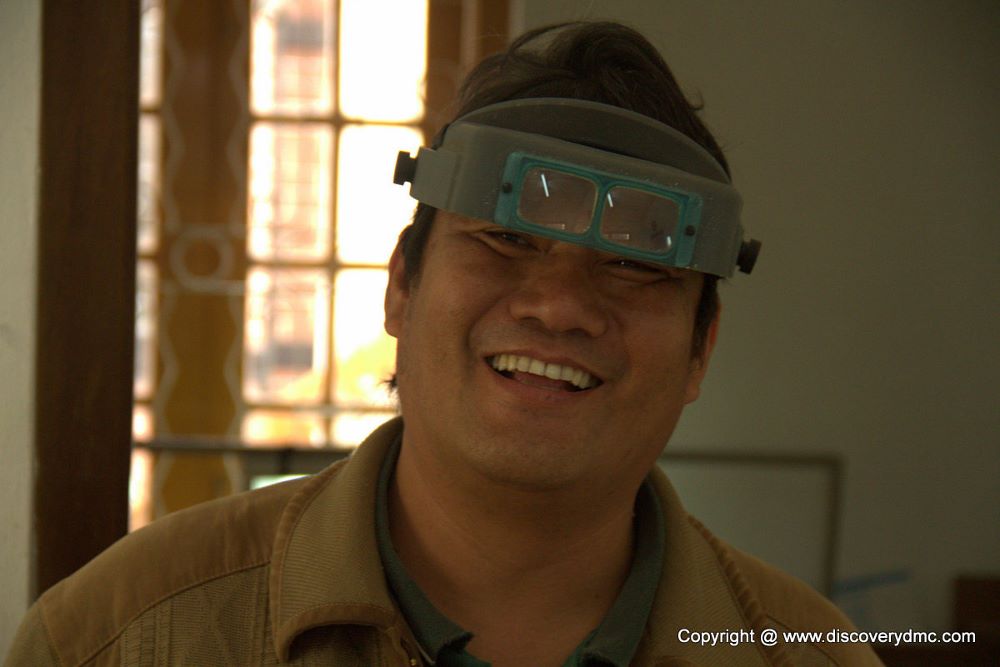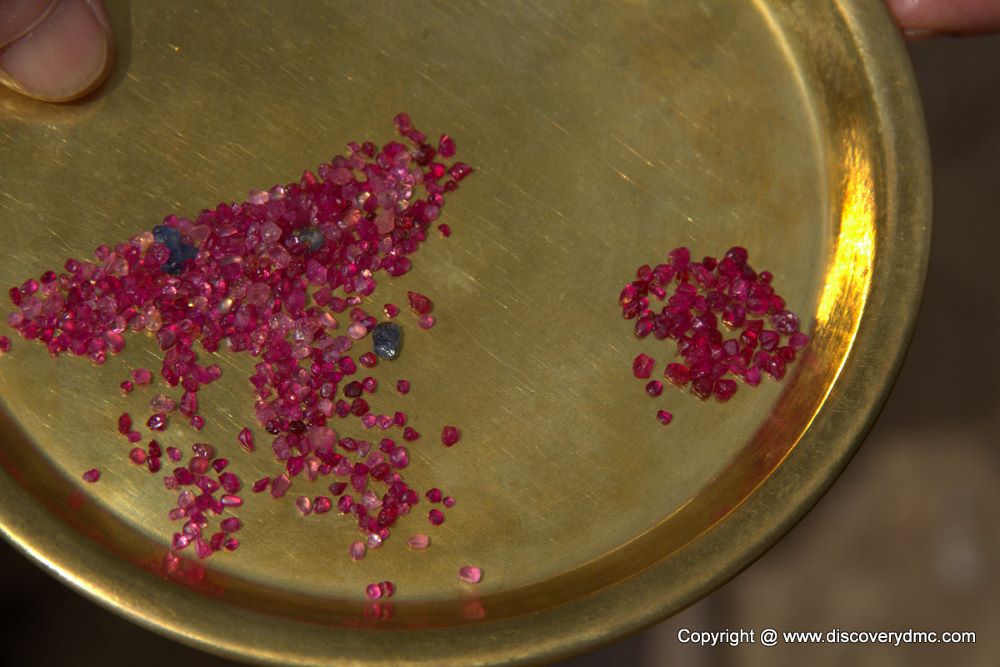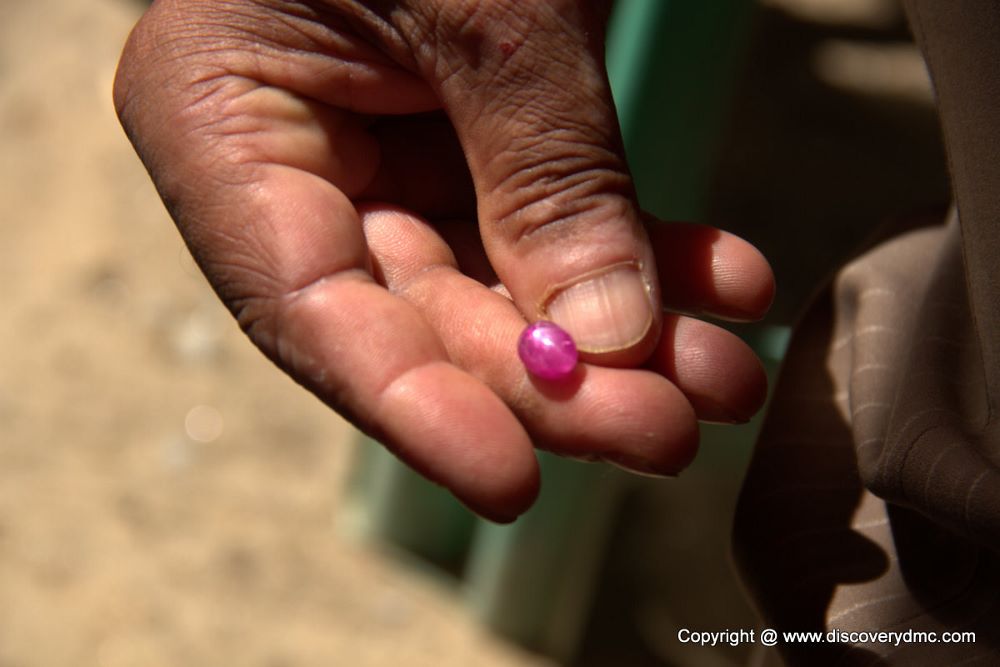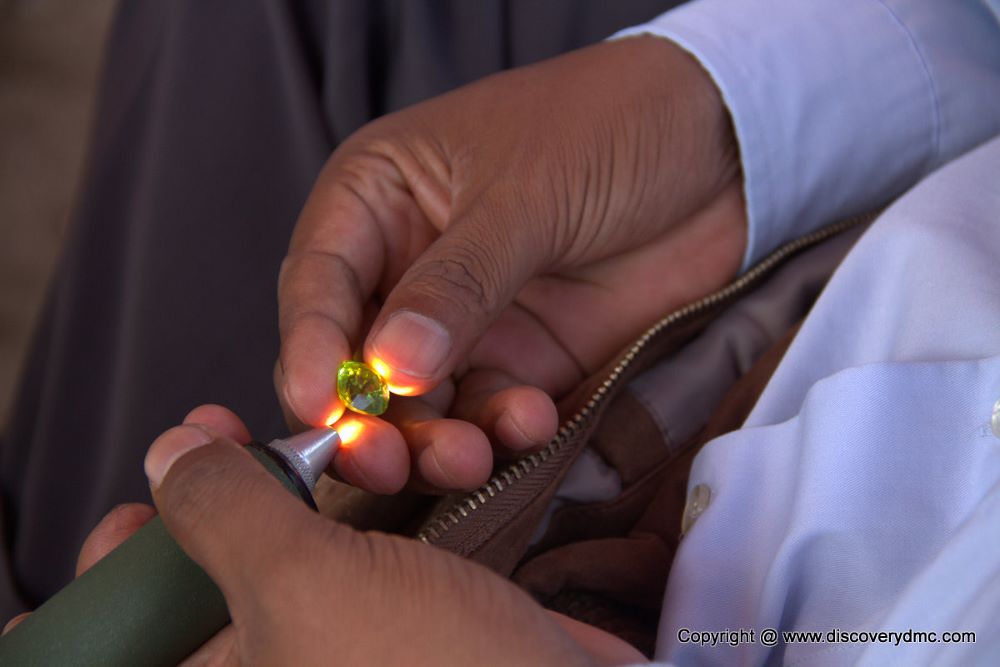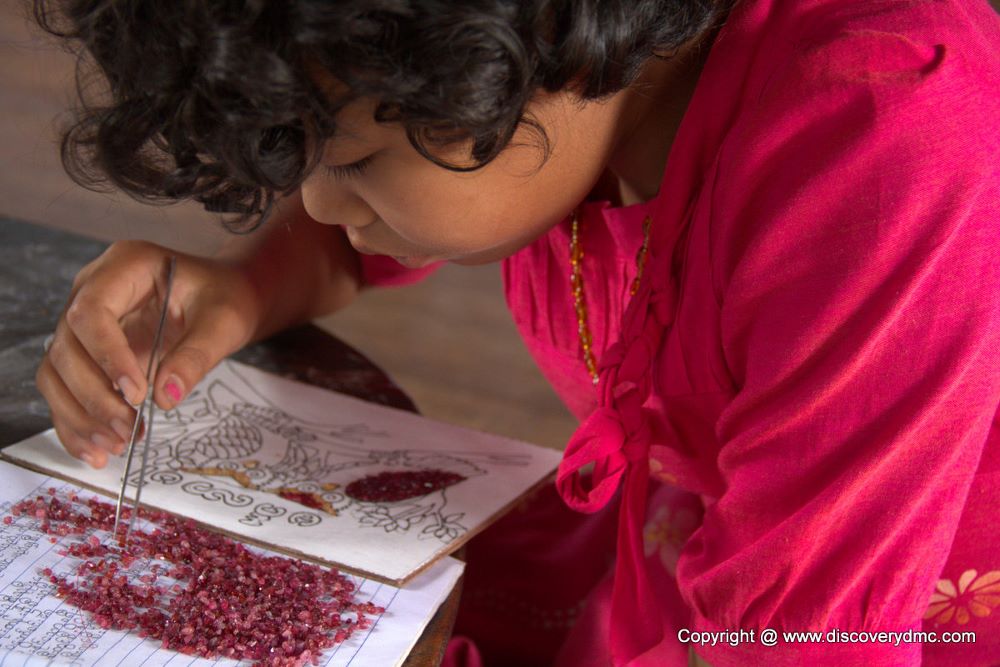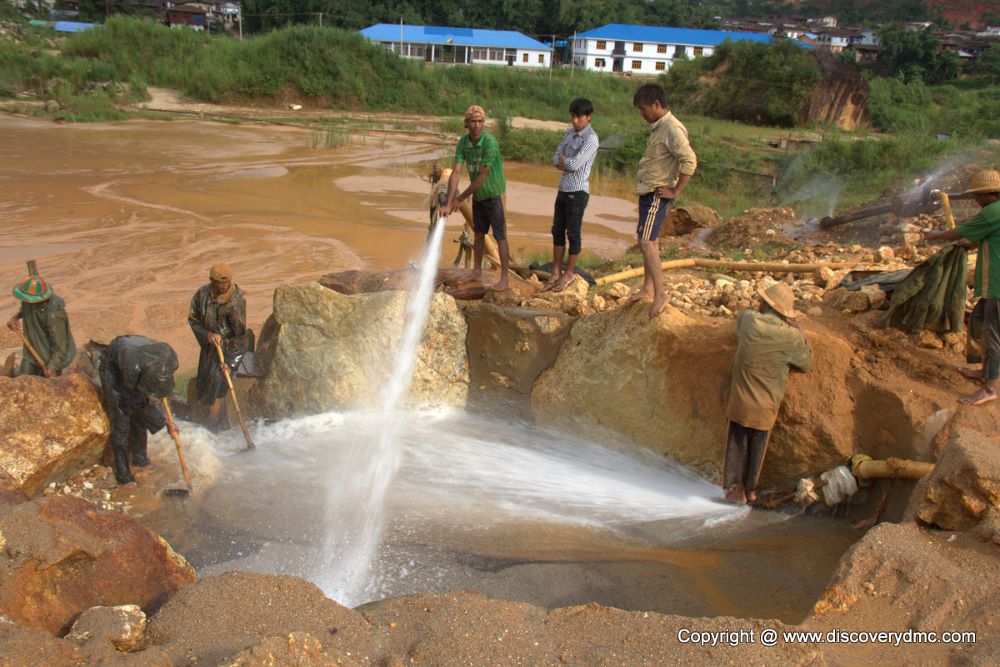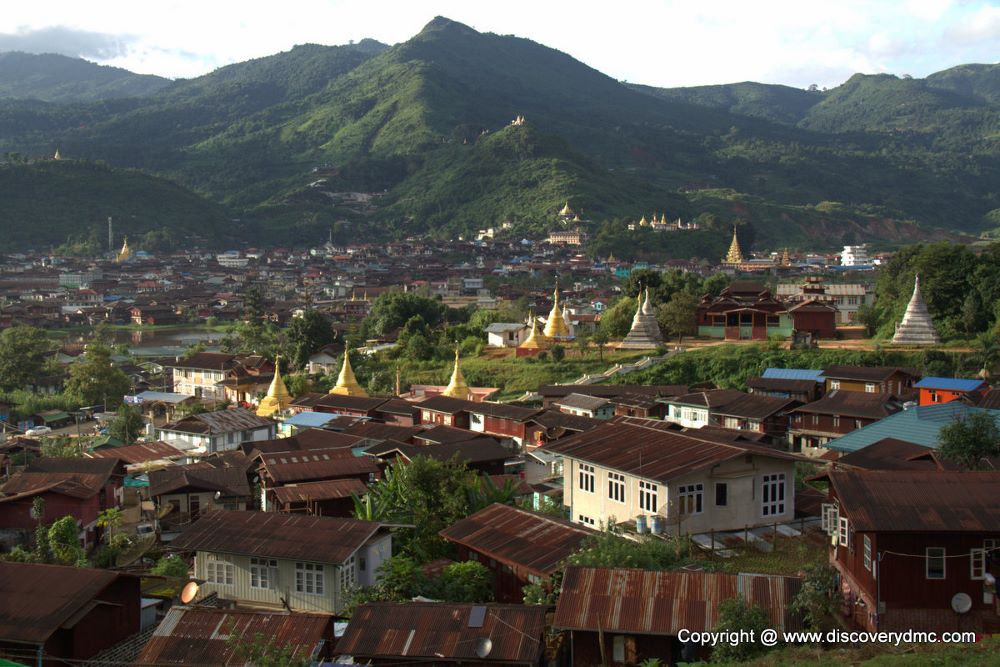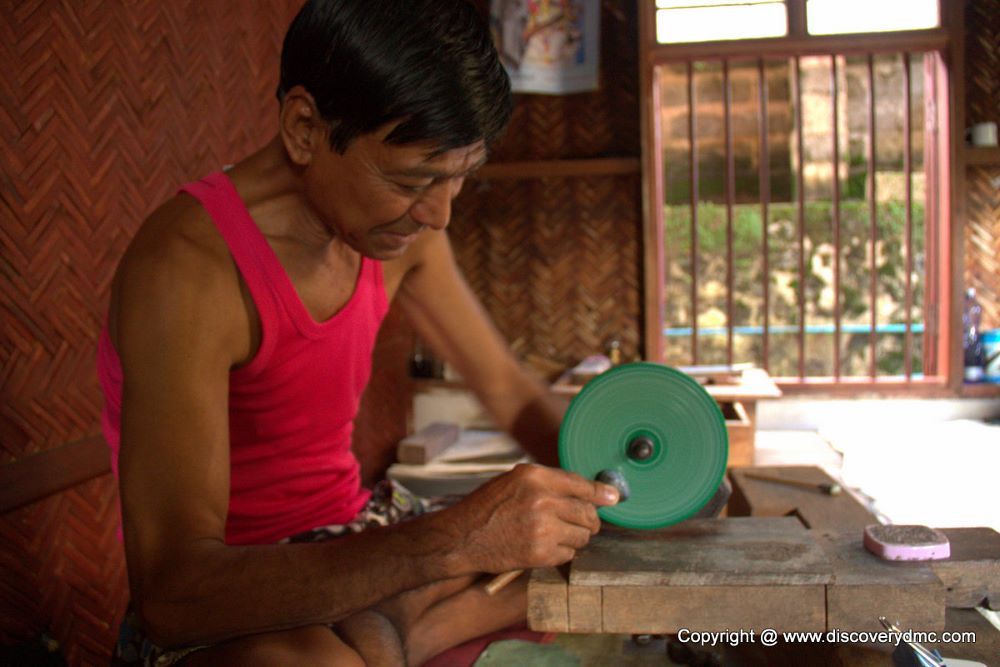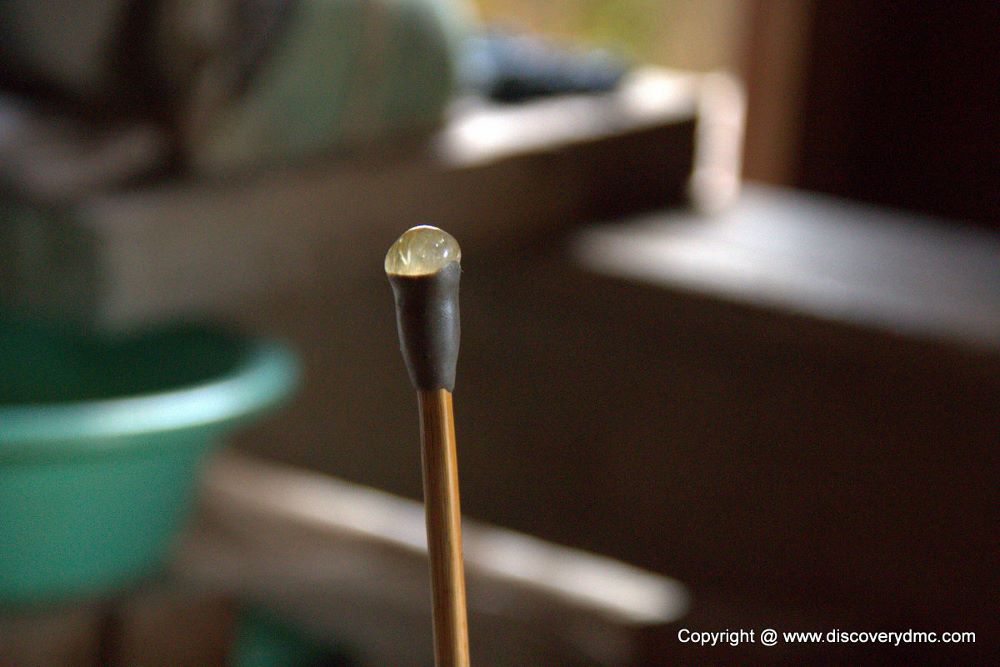MOGOK TRAVEL GUIDE
Mogok or Moegote as it is often called by the locals is a charming city nestled in a green mountain valley 200km/ 5hr drive north of Mandalay. Mogok and other villages in the region have been famous since ancient times for their precious gem stones.
90% of the world’s rubies come from Myanmar and Mogok valley. The valley and Mogok belt area are especially famous for the rare and most valued pigeon’s blood rubies and blue sapphires.
The Mogok mines also produce semi-precious stones such as lapis lazuli, garnet, moonstone, peridot and chrysoberyl. The gems are extracted from alluvial marble gravel by panning, tunneling and digging pits by hand.
History of Mogok
Earliest references to rubies of Burma have been found dating back to 16th century Shan Dynasty when the ruby mines of Mogok were taken over from the Shan by the king of Burma in 1597. The biggest rubies over certain size and weight had to be given to the king. Legends tell that larger stones were broken to be sold rather than been given to the king.
Most famous is the story of Daw Nan Kyi. Her husband who was a miner named Nga Mauk found a very big ruby which he broke in to two pieces. The one part was given to the king who rewarded him for great accomplishment. Another piece he sold to Chinese merchant. Later a Chinese prince who sought protection from the Burmese king gave him a reward for sanctum and token of appreciation an amazing ruby which was perfect fit to kings own ruby received from Nga Mauk. After realizing that he was cheated the king ordered to burn alive Nga Mauk and his family. Daw Nan Kyi his wife was collecting wood up the hill and witnessed the burning from the hill and died of broken heart – broken in half like the ruby.
Another story is connected to the Nga Mauk ruby. In the 1870s during the reign of King Mindon the French and the English were building colonial empires in Asia and around the world. French representative traveled to meet the Burmese king to enquire how much he would ask to let some French companies mine in Mogok. The Burmese king then showed the Nga Mauk ruby to the Frenchman, asking him how much he would estimate its value to be. The Frenchman, who had never seen such a beautiful gem, said that it would be impossible to assign a value to such an exceptional gem.
The Burmese King replied
If you cannot give me an estimate for that stone, how do you expect me to give you an estimate for the mine that produced it?
The Frenchman was speechless and departed.
Later, the British learned of the French interest in Mogok and Upper Burma, and feared that the French would take over the region and control access to China. Backed by a consortium of London-based gem merchants, they planned an invasion of Burma with one of its main objectives being control of Mogok and its ruby mines.
In 1886, the British succeeded in taking over Upper Burma. By 1889, they had formed Burma Ruby Mines Ltd. With tremendous interest in the company stock, the company received a series of leases, and was generally profitable until World War I. They introduced water cannons, washing plants, and other mechanized mining methods, and actually moved the town of Mogok into alluvial mining. The company did much to promote Burmese rubies in Europe and around the world. There were numerous operational problems, however, including flooding and theft. Also, the introduction of synthetic ruby caused widespread fear and plummeting prices in the marketplace. These problems finally led the company to abandon the mines in 1931.
In the 1950s, French writer and traveler Joseph Kessel visited the mines and was inspired to write the novel, Mogok, the Valley of Rubies. This increased public recognition of Mogok as the homeland of the finest rubies in the world, especially among the French. After Burma Ruby Mines Ltd. departed the region, local mining went back to its former small-scale methods. Although not as productive as large-scale production, they proved to be more cost-effective and sustainable. When the government nationalized the mines in 1969, smuggling became rampant.
All mining activities in the Mogok region are with government permission only. Best rubies and gems are brought to ministry of mines office for valuation first and send to Naypyitaw where gems emporium is held twice a year. Smaller pieces and lower quality are sold at the local markets.
Visiting the mines
There are hundreds of open and closed mines around Mogok region. It is necessary to obtain permits to visit mining sites. Your Mogok tour guide can arrange this when in Mogok.
The gem markets
Perhaps most interesting activity in Mogok is to visit its bustling gems markets. There is morning market where vendors will spread their merchandise to display on tarps on the ground.
Other market areas are more organized and have tables and umbrellas and plastic chairs. Deals are done everywhere and purchases are paid in cash. It is quite a scene. No armed guards of high security anywhere. As a foreigner you will surely catch locals’ attention and you will be shown many kinds of stones. It is friendly game and no one minds if you don’t want buy but are curious to learn.
Buying gems in Mogok
Mogok is the source market for world highest quality rubies and lots of other precious and semi-precious stones like spinel. Almost every person you will see has some gem stones in their pockets. To find a good deal may as hard as finding a needle in a hay stack. Some local gemologists say you may find gems less expensive in Yangon or in Mae Sot at the end of the trail rather than at source in Mogok.
There are many buyers so the prices be higher in Mogok due to that.
Most of the buyers that you see in Mogok are locals who have been commissioned to buy certain type of stone for clients or partners and will then either send the raw stone or cut and polish it that it is ready for use.
Probably best advice is that unless you are really expert in gems and know what you are looking for do not buy anything expensive and beware of synthetic stones which are difficult to tell apart and hardly worth anything.
Watch Electric Travellers in Mogok
Don’t miss this
Mogok does not have a gems museum but Buddhist monastery dedicated to Daw Nan Kyi’s comes close. Overlooking to the city from western mountain slope, the Daw Nan Kyi’s monastery is filled with gems and valuables donated by locals.
The most valued treasures include 3kg golden and 5kg silver pagodas and largy ruby and other gems that decorate the foot of Buddha’s throne. In the picture below
How to get Mogok permit?
Travel permits are still required for visiting Mogok. Locally registered tour operators in Myanmar can arrange this. Allow at least 2 weeks for the application as paperwork need to be processes in Naypyitaw. Travelling to Mogok has been very restricted until 2013. Only gems buyers with government escorts could visit the valley and a handful of tourists when lucky to get permits.
The application and reporting formalities still remain same as before in Mogok but are likely to change with the new government that has been in power since April 2016. Moving around feels free and tourism to Mogok is encouraged. People are extremely friendly and welcoming to visitors.
Weather in Mogok
At altitude of 1170 m Mogok enjoys temperate hill station climate year-round. During sweltering heat of summer months Mogok temperatures are pleasant 25-30c. During winter day time temperatures are between 15-25c and night time temperature may fall near freezing.
Hotels in Mogok
There are not many hotels in Mogok yet. We have listed here hotels where foreigners are permitted to stay in Mogok.
King Bridge Hotel 3*
Opened in early 2015 and currently best hotel in Mogok. The hotel is located 3 miles outside of Mogok on lush mountain slope. All rooms have balconies and valley views. There are nature trails from the resort to Palaung villages and tea plantation.
Golden Butterfly Hotel 2-3*
Located 8 miles outside of Mogok along the Mandalay road. Second best hotel in Mogok with swimming pool and new wing with rooms that will have great views coming up.
Interested in travelling to Mogok ?
Discovery DMC is specialist in organizing customized tours to Mogok for individuals as well as for groups.
View our example itinerary: 4 Days Mogok Ruby Land tour
Other recommended travel routings which you can combine to your longer trips in Myanmar.
Tour suggestion: Monasteries, rubies and rail journey along old Burma road
Explore Sagaing one of the monastic centers of Myanmar. Visit Shwebo kingdom and marvel at pottery making in Kyauk Myaung pottery village. Drive to Mogok over lush mountain ranges. After visiting gem mines and markets travel to Pyin Oo Lwin hill station town with gardens, colonial mansions and flower, coffee and tea farms. Take a nostalgic train ride over the Gokteik viaduct
–> after train ride you can either continue to Kyaukme or Hsipaw or return to Mandalay.
In both Kyaukme and Hsipaw we can arrange treks to Palaung tribe villages, cycling excursions.
For the adventurous travelers check out our northern Myanmar motorcycle tour
Contact us for more information and quotes!
OTHER REGIONS
Myanmar / Essential Information
- Visas and border crossings
- Country facts and figures
- Language and culture
- Security
- Money
- Mobiles and the Internet
- Travel to and around Myanmar
- And more
